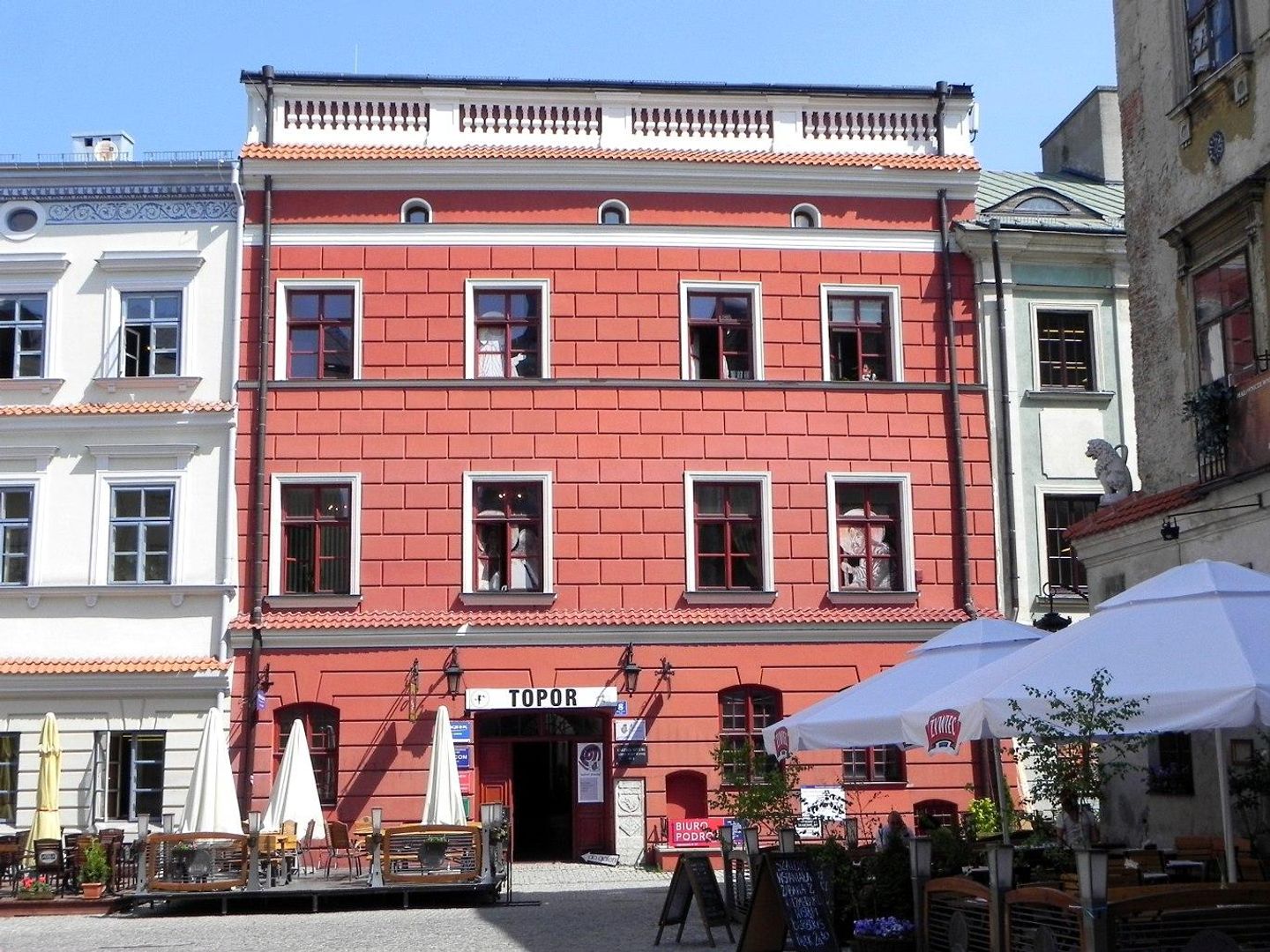Lubomelski Tenement House in Lublin
6.66

Overview
The Lubomelski Tenement in Lublin is an excellent example of Renaissance architecture, distinguished by its characteristic red facade and a preserved Renaissance portal with the Zadora coat of arms dated 1540. The interior of the building is adorned with valuable secular-themed polychromes, particularly on the walls of the cellars, which were used as a wine cellar. The history of the tenement dates back to the early 16th century when it came into the possession of the Lubomelski family. After a fire in 1575, the building was rebuilt and decorated with paintings. After several changes of ownership, including the sale of the tenement to Michał Szerer in 1661, it passed into the hands of the Szuart family and later the Makarowicz family, who neglected the property in the 18th century. In 1782, Franciszek Ksawery Makarowicz carried out a significant renovation. In 1815, the building came into the possession of the Chruścielewski family, and in 1904 it became the property of the Jewish community. Despite various changes in ownership, the appearance of the tenement has remained largely unchanged since the 18th-century renovation, making it a valuable part of Lublin's cultural heritage. An interesting fact is that the polychromes in the cellars are a rare example of Renaissance secular painting in Poland. The Lubomelski Tenement is not only an important architectural object but also a historical witness to many events and social changes in Lublin.
Location
Tickets
Powered by GetYourGuide
You can also find here:
2025 Wizytor | All Rights Reserved
